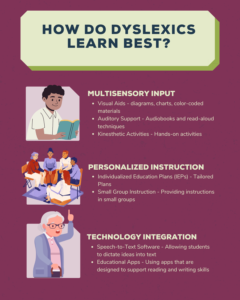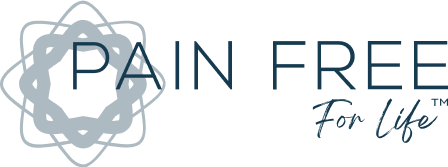
“Everyone is a genius. But if you judge a fish by its ability to climb a tree, it will live its whole life believing that it is stupid.”
– Albert Einstein
Dyslexia is a common learning difference that affects the way individuals process written and spoken language. It is characterized by difficulties with accurate and/or fluent word recognition and by poor spelling and decoding abilities. These challenges are often unexpected in relation to other cognitive abilities and the provision of effective classroom instruction. Despite these difficulties, many people with dyslexia succeed academically and in their careers, particularly when given the right support and accommodations. To understand more about what dyslexia is, visit the Yale Center for Dyslexia & Creativity.
What is the Main Cause of Dyslexia
The primary cause of dyslexia stems from individual differences in the parts of the brain that process reading and language. These differences often have a genetic basis. Dyslexia is not due to a lack of intelligence or desire to learn. It results from differences in brain wiring and function that affect the ability to recognize and process the sounds that make up words. This neurological basis is often inherited, meaning that dyslexia can run in families. It’s essential to understand that these differences in brain structure and function are not indicative of a deficit, but rather a variation in how the brain processes information. With appropriate teaching methods and support, individuals with dyslexia can learn to read effectively.
What are Coping Strategies for Dyslexia?
Before diving into specific strategies, we recommend watching this 10-minute training video by Dr. Rob Vanbergen, which highlights early signs, timely diagnosis, and innovative interventions for supporting those with dyslexia.
Managing dyslexia effectively involves a variety of strategies tailored to the individual’s needs. Here are some effective coping strategies:
- Structured Literacy Instruction: This method uses explicit, systematic, and sequential teaching of literacy at multiple levels, including phonology, sound-symbol association, and syllable instruction. It breaks down the learning process into smaller, manageable steps that build on each other, making it easier for individuals with dyslexia to grasp complex reading and writing skills.
- Multisensory Learning Techniques: Engage multiple senses simultaneously to enhance memory and learning of written language. For example, teaching methods that involve seeing, hearing, and touching letters and words can help reinforce learning. This can include activities like tracing letters in sand while saying the sounds, using magnetic letters to build words, or incorporating music and rhythm into learning sessions.
- Assistive Technology: To support reading and writing tasks, utilize tools like audiobooks, text-to-speech software, and word processors with spell-check. These technologies can help bridge the gap between the individual’s reading level and the content they need to access, making it easier to keep up with schoolwork or professional reading requirements.
- Organizational Skills Training: Teach students how to use planners, color-coded folders, and other organizational aids. Being organized can help reduce the cognitive load on individuals with dyslexia, making it easier to manage school or work tasks and deadlines.
- Emotional Support: Provide a supportive environment to build self-esteem and resilience, acknowledging the emotional challenges that can accompany dyslexia. Positive reinforcement, encouragement, and understanding from teachers, parents, and peers can make a significant difference in the individual’s confidence and motivation.
For more detailed advice, refer to it here.
How Do Dyslexics Learn Best?

Learners with dyslexia benefit most from a multisensory approach that engages various senses to enhance memory and understanding. Here are some effective methods:
Use Multisensory Input
- Visual Aids: Incorporate diagrams, charts, and color-coded materials to support text-based information. Visual aids can help dyslexic learners organize and remember information more effectively. For example, using graphic organizers to map out ideas or color-coding different types of information can make complex concepts more accessible.
- Auditory Support: Use audiobooks and read-aloud techniques to improve comprehension and retention. Listening to text can help dyslexic learners follow along with written material and better understand the content. Repeated readings and discussions of the text can also reinforce understanding.
- Kinesthetic Activities: Engage in hands-on activities that involve movement, such as tracing letters or using manipulatives to understand mathematical concepts. Activities that involve physical movement can help reinforce learning by connecting abstract concepts to concrete actions.
Personalized Instruction
- Individualized Education Plans (IEPs): Develop tailored plans that address the specific needs of the learner. An IEP can include specific goals, accommodations, and teaching strategies designed to help the dyslexic learner succeed.
- Small Group Instruction: Provide instruction in small groups to offer more personalized attention and support. Small group settings can create a more comfortable learning environment where students feel more confident asking questions and engaging in discussions.
Technology Integration
- Speech-to-Text Software: Allow students to dictate their ideas, which can be transcribed into text. This can help dyslexic learners overcome difficulties with writing and spelling, allowing them to focus on expressing their ideas.
- Educational Apps: Use apps designed to support reading and writing skills. There are many apps available that offer interactive and engaging ways to practice reading, spelling, and other literacy skills.
For additional methods and support strategies, explore this blog post.
A Natural Option
At Pain Free for Life, we believe in holistic approaches to managing various conditions, including dyslexia. Microcurrent therapy is one such innovative treatment that has shown promise in supporting cognitive function and alleviating symptoms associated with dyslexia. This therapy involves the use of low-level electrical currents to stimulate healing and improve neurological function. The gentle currents can help improve blood flow, reduce inflammation, and enhance the brain’s natural healing processes. By incorporating microcurrent therapy into a comprehensive treatment plan, individuals with dyslexia may experience improvements in their reading and language processing abilities.
If you’re interested in how microcurrent therapy can support your journey, or someone else’s, with dyslexia or any other pain-related condition, please reach out to our concierge team at concierge@painfreeforlife.com. They are here to provide all the information you need. For existing clients, we recommend contacting your treatment coordinator for personalized support tailored to your needs. Additionally, we invite you to join our Pain Free For Life Support Group on Facebook, where you can connect with others, share experiences, and gain valuable insights.





